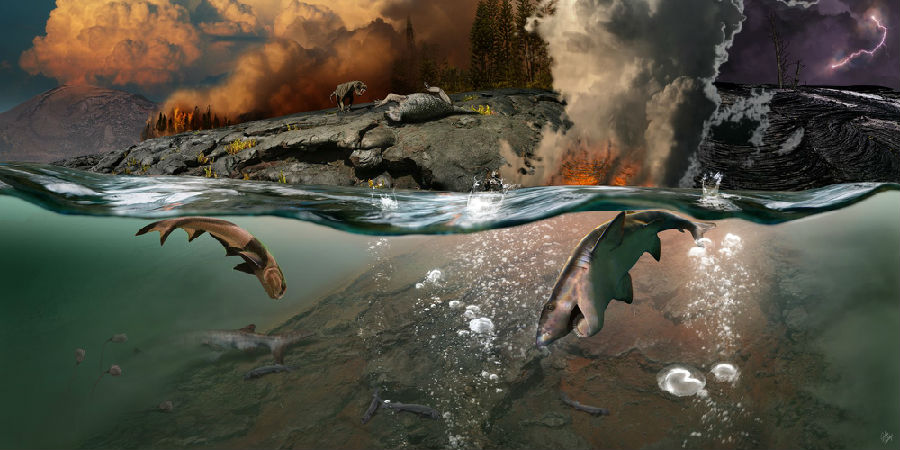Two points need to be kept in mind. First, these are all just informed guesses. Estimates for the number of animal species alive at the end of the Permian range from as low as 45,000 to as high as 240,000. If you don't know how many species were alive, you can hardly specify with conviction the proportion that perished. Moreover, we are talking about the death of species, not individuals. For individuals the death toll could be much higher — in many cases, practically total. The species that survived to the next phase of life's lottery almost certainly owe their existence to a few scarred and limping survivors.

In between the big kill-offs, there have also been many smaller, less well-known extinction episodes — the Hemphillian, Frasnian, Famennian, Rancholabrean, and a dozen or so others — which were not so devastating to total species numbers, but often critically hit certain populations. Grazing animals, including horses, were nearly wiped out in the Hemphillian event about five million years ago. Horses declined to a single species, which appears so sporadically in the fossil record as to suggest that for a time it teetered on the brink of oblivion. Imagine a human history without horses, without grazing animals.












